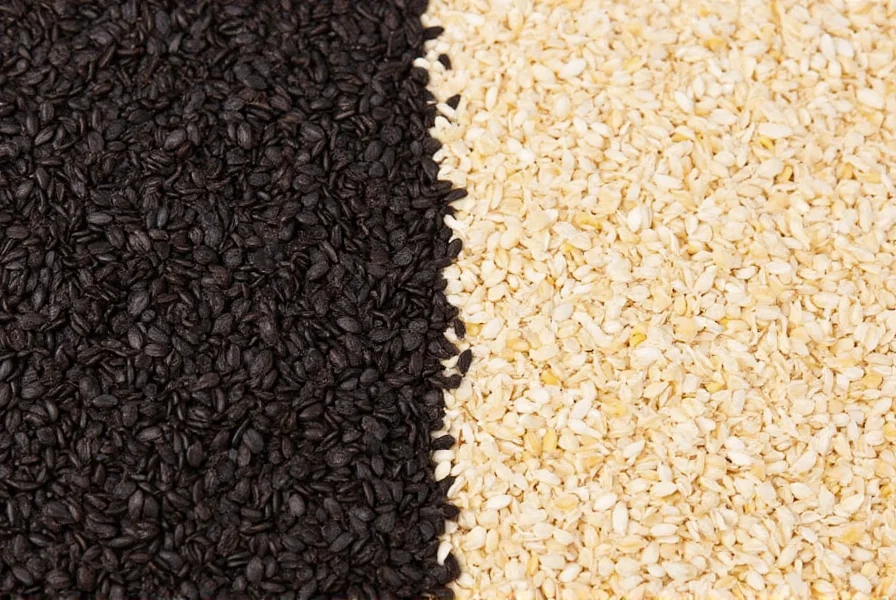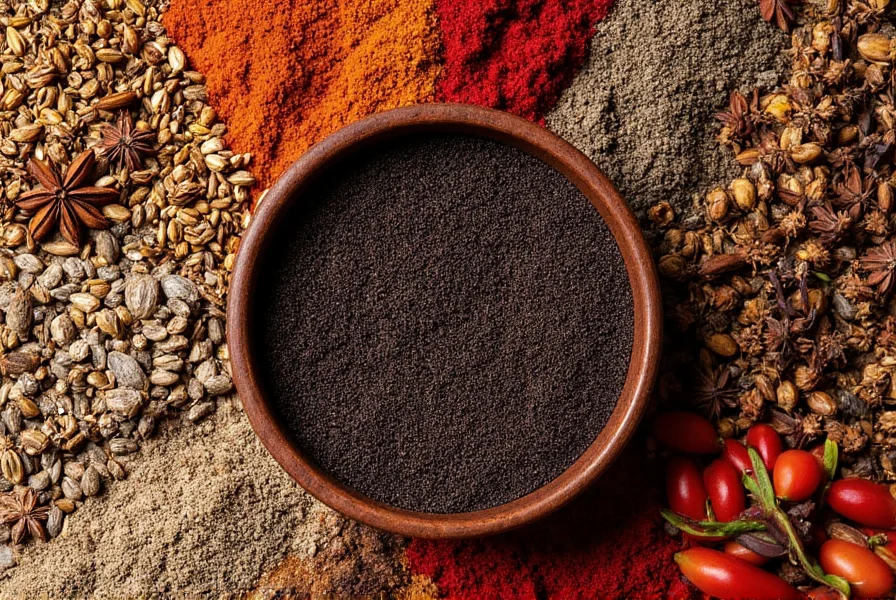Sesame seeds are more than just a garnish—they're a flavor powerhouse that can elevate your dishes from good to unforgettable. But here's the key: while sesame seeds are generally small (2-3mm), their hulling status (hulled vs. unhulled) and color significantly impact flavor and texture more than size differences. Whether you're an amateur cook or a seasoned chef, understanding these characteristics is essential for optimal results.
Table of Contents
- Why Sesame Seed Characteristics Matter
- Types of Sesame Seeds by Hulling and Color
- Practical Tips for Using Sesame Seeds
- Buying Guide: Choosing the Right Sesame Seeds
- Frequently Asked Questions
- Conclusion
Why Sesame Seed Characteristics Matter
When selecting sesame seeds, many assume size is the critical factor. In reality, hulling status (whether seeds are hulled or unhulled) and color have greater impact on flavor and texture than minor size variations. All sesame seeds typically measure 2-3mm in length, but hulled seeds (like white) have milder flavors, while unhulled seeds (black or brown) deliver stronger, earthier notes due to the nutrient-rich hull.
Imagine trying to make authentic Japanese natto with unhulled black sesame seeds—their strong flavor would overpower the dish. Conversely, using hulled white seeds in Chinese black sesame soup would lack the characteristic deep, toasted richness. Understanding these characteristics ensures perfect balance in every recipe.
Types of Sesame Seeds by Hulling and Color
Sesame seeds come in several varieties, primarily differentiated by hulling and color. Here's an accurate comparison:
| Sesame Seed Type | Size | Hulling Status | Texture | Flavor Profile | Best Uses |
|---|---|---|---|---|---|
| White Sesame Seeds | 2-3mm | Hulled | Crunchy | Mild, Nutty | Japanese dishes, baked goods, salad toppings |
| Black Sesame Seeds | 2-3mm | Unhulled | Soft, Oily | Strong, Earthy, Toasted | Chinese desserts, sauces, nutrient-rich dishes |
| Golden Sesame Seeds | 2-3mm | Hulled | Crunchy | Buttery, Rich | Indian curries, snacks, gourmet presentations |
| Brown Sesame Seeds | 2-3mm | Unhulled | Crunchy | Nutty, Earthy | General cooking, grain bowls, health-focused recipes |


Practical Tips for Using Sesame Seeds
Here are expert-backed insights to maximize your sesame seed usage:
- Toast strategically: Hulled seeds (white/golden) toast quickly—use medium-low heat and watch closely to avoid burning. Unhulled seeds (black/brown) develop deeper flavors with longer toasting.
- Grind for texture control: For smooth pastes (like tahini), use hulled seeds. For textured dips or toppings, leave unhulled seeds whole or coarsely ground.
- Adjust quantities by type: Unhulled seeds (black/brown) have stronger flavors—use 20-30% less than hulled seeds for equivalent impact.
- Pair intentionally: Hulled seeds complement delicate flavors (citrus, honey), while unhulled seeds pair well with bold ingredients (soy, garlic, dark chocolate).
- Store properly: Unhulled seeds have higher oil content—refrigerate to prevent rancidity. Hulled seeds stay fresh longer at room temperature.
Remember: hulling status and color are the true determinants of flavor and texture performance, not minor size differences. Choosing the right type transforms your dishes from ordinary to exceptional.
Buying Guide: Choosing the Right Sesame Seeds
For Baking and Sweet Treats
Opt for hulled white or golden sesame seeds. Their mild flavor won't overpower delicate desserts. Look for organic, non-GMO options with a fresh, nutty aroma.
For Asian Cuisine
For authentic Japanese dishes, use hulled white sesame seeds. For Chinese or Korean recipes requiring robust flavor, choose unhulled black sesame seeds. Ensure they're labeled "unhulled" for maximum authenticity.
For Salads and Dressings
Hulled white seeds provide subtle crunch without dominating. For creamy dressings, grind them into a smooth paste. Avoid unhulled seeds here—their strong flavor can overwhelm delicate greens.
For Health-Focused Dishes
Unhulled black or brown sesame seeds retain more nutrients in the hull. Ideal for smoothies, oatmeal, or energy balls where you want added minerals like calcium and iron.
| Product Type | Best For | Key Features | Storage Tip |
|---|---|---|---|
| Hulled White Sesame Seeds | Baking, garnishing | Mild flavor, crunchy texture | Room temperature for 6 months |
| Unhulled Black Sesame Seeds | Asian desserts, nutrient boosts | Strong flavor, high mineral content | Refrigerate for 3 months |
| Golden Sesame Seeds | Gourmet presentations | Buttery notes, vibrant color | Room temperature for 4 months |
| Unhulled Brown Sesame Seeds | Health-focused recipes | Earthier flavor, nutrient-dense | Refrigerate for 3 months |
Frequently Asked Questions
Does sesame seed size really affect flavor intensity?
Not significantly. All sesame seeds are 2-3mm in size. Flavor differences come from hulling status (hulled vs. unhulled) and color. Hulled seeds (white/golden) have milder flavors due to removed hulls, while unhulled seeds (black/brown) deliver stronger, earthier notes from the nutrient-rich outer layer.
Can I substitute different sesame seed types in recipes?
Yes, but adjust for hulling status. Substitute unhulled for hulled seeds using 20-30% less quantity to avoid overpowering flavors. For texture-sensitive dishes (like bread coatings), hulled seeds provide finer texture. Never substitute poppy seeds—they're a different seed family entirely.
How does hulling affect texture in finished dishes?
Hulled seeds (white/golden) create uniform, subtle crunch. Unhulled seeds (black/brown) offer more pronounced texture and visual contrast. In sauces, hulled seeds blend smoothly; unhulled seeds retain distinct bite. For coatings on proteins or bread, hulled seeds adhere better without overwhelming texture.
Why do recipes specify particular sesame seed types?
Professional recipes prioritize hulling status for authentic flavor balance. Japanese dishes require hulled white seeds for delicate profiles, while Chinese desserts rely on unhulled black seeds for deep, toasted notes. Using the wrong type disrupts traditional taste profiles and textures.
Does toasting affect different sesame seed types differently?
Yes. Hulled seeds (white/golden) toast quickly (1-2 minutes) and burn easily—remove immediately when golden. Unhulled seeds (black/brown) need 2-3 minutes to develop their signature earthy notes. Always toast in a dry pan over medium-low heat, stirring constantly, until seeds just begin to pop.
Conclusion
Sesame seeds may seem simple, but their hulling status and color fundamentally shape your cooking experience. From texture to flavor intensity, these characteristics matter far more than minor size variations.
Whether you're perfecting a classic recipe or experimenting with new dishes, choose sesame seeds based on hulling and color—not size. The right type unlocks authentic flavors and elevates every dish.
Next time you reach for sesame seeds, check the label for "hulled" or "unhulled" specifications. This small detail makes all the difference in your culinary creations.










 浙公网安备
33010002000092号
浙公网安备
33010002000092号 浙B2-20120091-4
浙B2-20120091-4